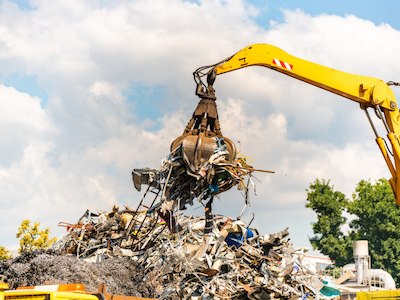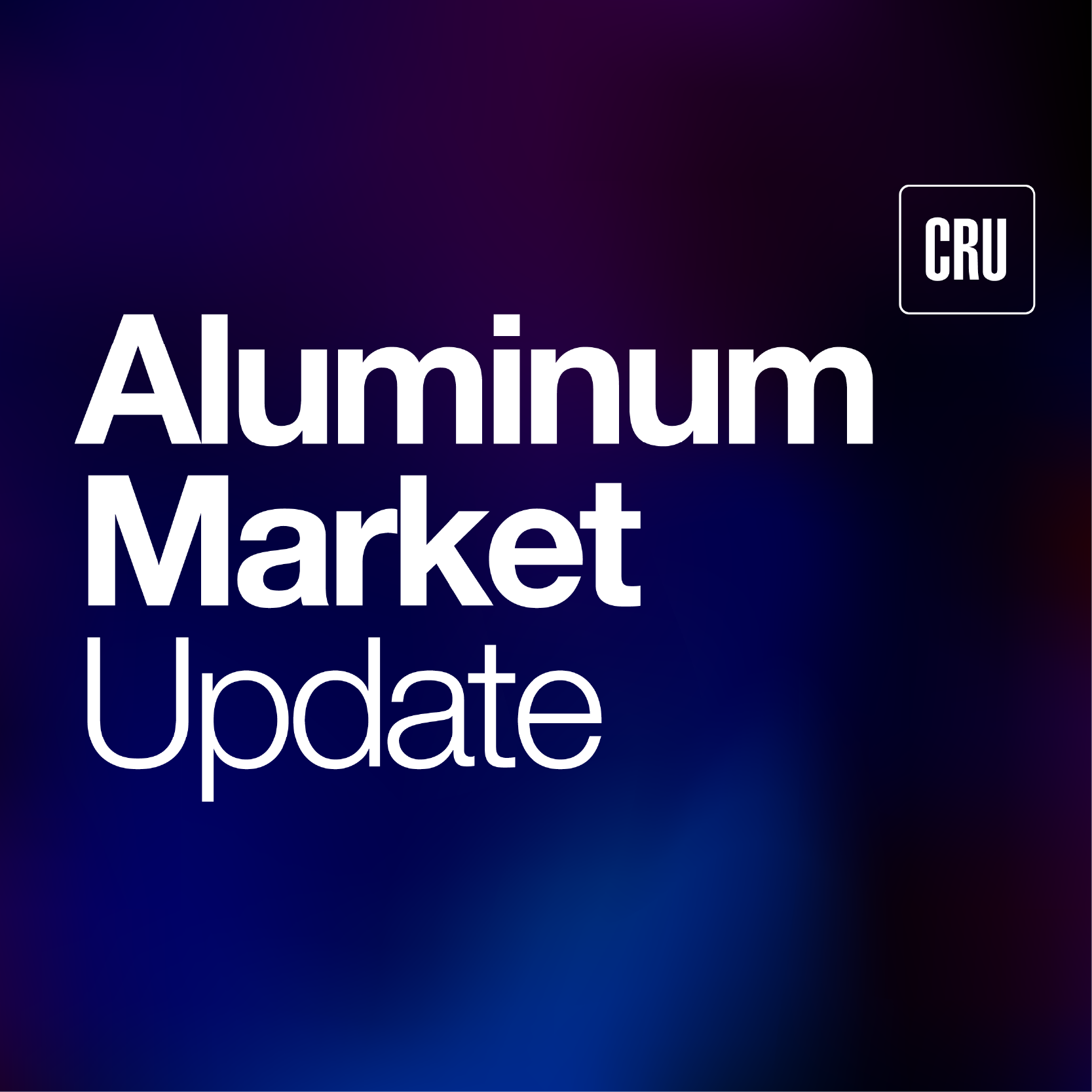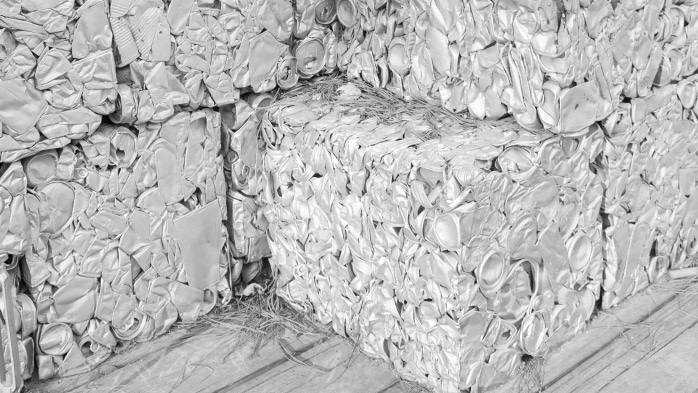Aluminum Scrap Markets
February 28, 2025
February Month Round Up: Turbulence, tariffs, and trade shifts
Written by Gabriella Vagnini & Greg Wittbecker
February didn’t let the aluminum market rest. Between tariff battles, supply chain disruptions, and big shifts in domestic production, we’re seeing a major reshaping of the industry. The U.S. is tightening trade policies, global premiums are fluctuating, and key players are making moves that will define the next few months. Here’s a full breakdown of what happened, what it means, and where we go from here.
Tariffs, supply pressure, and global volatility
• Tariff delays, premium swings, and global supply chain risk – The U.S. slapped 25% tariffs on Canadian and Mexican aluminum, then pulled back, delaying them for 30 days to allow for negotiations. The Midwest Premium (MWP) jumped over 15 cents this month but settled down a bit during the end of the month. Canada may divert its production to the EU27, leaving the U.S. to source its continuing primary deficit from offshore, seaborne supply. China wasn’t so lucky, getting hit with a 10% tariff, triggering retaliatory tariffs on U.S. coal, LNG, and crude oil. (read more here)
Why does this matter? Swapping Canadian primary supply for Middle East, Australian or Indian creates more complexity to buyers. Canadian and Mexican tariffs will cause chaos in the auto industry, whose supply chains are intertwined with both countries. Slapping duties on imported autos won’t necessarily deliver more sales to USA OEM as their cost structure is up in the air.
• Recycling and secondary aluminum updates – Crown Holdings reported a 5% jump in aluminum packaging demand, while Waste Management (WM) expects recycling profits to double by 2026. WM earnings from recycling were small by comparison to solid waste and investment in recycling will slow sharply in 2026. (read more here)
Scrap discounts to primary are widening as MWP rises, offering some relief to very tight spreads to mill buyers. (read more here)
Meanwhile, HPQ Silicon is working on turning aluminum dross into hydrogen fuel, which could reshape scrap processing economics.
• European and Asian premiums slump – Europe’s auto and construction sectors remain weak, pushing premiums down $5–$10/mt in Germany and Rotterdam. Meanwhile, Japan and South Korea saw sharp premium declines, signaling soft global demand for primary aluminum. If U.S. tariffs force Canadian metal into Europe, prices could drop further. Rotterdam duty paid premiums bear closely scrutiny as a rotation of Canadian exports to the EU will put that market under pressure and impact Canadian FOB smelter netbacks. (read more here)
• The policy wildcard: tariffs, exemptions, and trade moves – Lawmakers are pushing for U.S. Trade Representatives to have more control over tariffs, which could lead to policy shifts or exemptions. The question is whether Trump sticks to his aggressive trade stance or adjusts under political and economic pressure. (read more here)
Domestic production shifts, trade battles, and new industry power plays
• ADI’s rise: a new force in aluminum – Steel Dynamics-backed ADI is ramping up two new mills and securing raw material supplies, setting itself up as a major domestic competitor. With a strong focus on scrap-fed aluminum, ADI is tightening the scrap market and reshaping how material flows in North America. Their partnership with Kloeckner allows for more in-house processing, cutting dependence on imports and putting pressure on Alcoa, Novelis, and Kaiser Aluminum. Meanwhile, ADI is keeping a close watch on Mexican slab imports and the possibility of using foreign trade zones (FTZs) to work around U.S. tariffs. (read more here)
• Tariff handicapping – win, lose, or draw? – The latest U.S. tariffs are pushing domestic sheet/plate producers to full capacity. While Alcoa and Century benefit from higher premiums, the government wants primary smelters running at 80% utilization, a tough ask given energy and cost constraints. Restarts of Haweville, New Madrid and Warrick remain doubtful. (read more here)
• Novelis adjusts strategy amid market uncertainty – With tariffs and trade risks mounting, Novelis is shifting more aggressively into automotive and can sheet production. The company is keeping a close watch on evolving trade policies, knowing that any misstep could disrupt its U.S. operations. (read more here)
The next battleground for aluminum
- EU bans Russian aluminum – The EU is phasing out Russian aluminum over the next year, but the real impact starts now. This is already tightening slab and billet supply, pushing more demand toward U.S. and Middle Eastern producers. (read more here)
- Trump expands tariffs to autos & semiconductors – The latest tariff expansions aren’t just about metals anymore. The U.S. is now hitting autos, semiconductors, and pharmaceuticals, forcing automakers and aluminum suppliers to rethink their supply chains. (read more here)
- Hydro’s plant closures & the EV market reality check – Weak EV demand is forcing Hydro to shut down extrusion plants in the U.S., UK, France, and Lithuania. BorgWarner is also closing EV facilities, signaling that the EV transition isn’t happening as fast as expected. This could impact demand for aluminum lightweighting applications. (read more here)
- Storage costs and trade zone strategies – With tariffs driving up costs, companies are actively looking for alternative storage solutions to mitigate expenses. Many in the downstream market are unaware of Foreign Trade Zones (FTZs) and bonded warehousing options, which could help defer or reduce tariff impacts. (read more here)
- Recycled aluminum & tariff loopholes – Recycled aluminum is still exempt from Section 232 tariffs, a major concern for UBC buyers importing from both Canada and Mexico, however country of origin tariffs remain a threat to jack up price or else risk those supplies going to Asia. But that could change fast. Retaliatory tariffs could disrupt scrap exports, potentially driving up secondary billet prices. (read more here)
What now?
Tariff chaos isn’t over – The 30-day tariff delay on Canada and Mexico buys time, but if the U.S. follows through, we could see another Midwest Premium spike. China’s response could also raise costs for U.S. producers.
Domestic semis production gains, but with consequences – The rise of ADI and new U.S. capacity means less reliance on imports, but it’s also tightening scrap markets and reshaping supply dynamics. If more mills follow ADI’s lead, the industry will need new scrap supply solutions.
The Russian aluminum shift – The EU’s ban on Russian aluminum is already forcing a reshuffling of global supply chains. U.S. producers stand to benefit, but rising demand from European buyers could make domestic metal even more expensive.
Why is this happening?
Tariffs as a policy tool – The U.S. is using tariffs to drive domestic production, but unintended consequences—higher costs, global retaliation, and supply chain distortions—are creating new risks.
Scrap supply tightening – As more U.S. mills switch to scrap-fed aluminum, competition for raw materials is increasing. With recyclers already struggling to keep up, higher prices for secondary billet are almost inevitable.
EV demand shifts – The aluminum industry bet big on EVs, but with automakers scaling back production, demand for aluminum-intensive battery enclosures and lightweighting could take a hit.
Final thought: The market waits to price the most disadvantaged supply
The market is working overtime handicapping the possible scenarios for Canada, Mexico and the rest of the world. We would argue that that wastes a lot of mental capacity , better spend thinking about how tariff-induced inflation is going to impact demand.
Whether Canada or Mexico gets relief is secondary. What matters is the market will eventually price to the highest cost of replacement. Those countries with the highest tariff will set the market. That could be Canada with 35% (10% for origin+ 25% for Section 232) or a blanket 25%.
It is now important to focus on 25-35% increases in primary cost end on the bottom-line selling price for autos, RV, beverage cans and windows/door.
Gabriella Vagnini
Read more from Gabriella Vagnini







